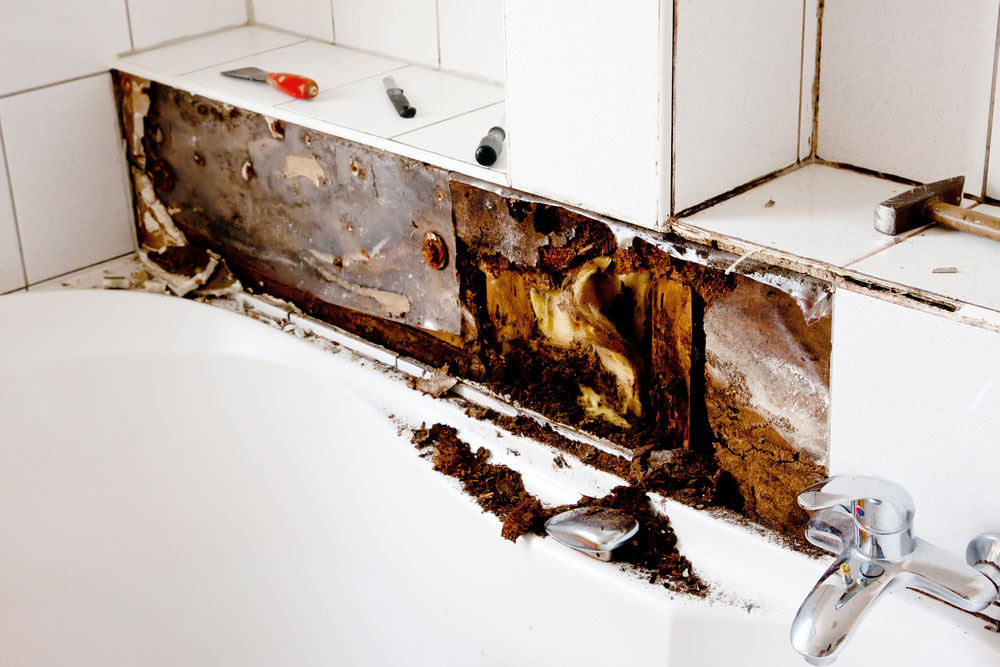The writer is making a number of good observations related to How to Prevent Bathroom Water Damage as a whole in this great article down below.

The restroom is very prone for moist build-up and prospective water damage as a result of the frequent use water in it. This article supplies basic inspection methods to aid discovering water damages risks.
The regular use water in the restroom makes it exceptionally vulnerable for damp buildup as well as possible water damage. By checking it frequently, you can lower water related damages.
The complying with collection of evaluations is very easy to perform as well as should be done when in every 3 months in order to keep your shower room in good shape as well as to stop potential water damages brought on by the bathtub, the shower, pipe joints and also plumbing, sinks, closets, and the bathroom
Do not forget performing these evaluations and also be thorough while performing them. Bear in mind that these basic examinations can save you a lot of cash by giving early indications for water damage
Bathtub as well as Shower
The shower as well as bath tub require special interest as well as upkeep. Examine the tiles and replace if broken. Ensure that there is no missing out on cement in between the floor tiles. Inspect and replace broken caulking at joints where the wall surfaces fulfill the flooring or the bath tub. Clogged drains and pipes issues will avoid the tub from drying out and also might indicate major issues underneath the bath tub. Consult with a professional right away to stop architectural damages. Take notice of discolorations or soft locations around the bath tub wall surfaces as they may indicate an internal leak.
Plumbing
Signs for water damage are hard to spot since many pipes are installed inside the walls.
Pay special focus to flooring as well as walls moisture and also spots as they might suggest an unnoticeable plumbing issue. Check moisture degrees in adjoining rooms as well.
Sinks and also Cabinets
Sinks and also closets are subjected to wetness and humidity day-to-day and also are commonly ignored. Examine consistently under the sink as well as on the counter top above it. Fix any kind of drip in the trap as it may recommend drainpipe issues. Take a look around the sink, slow draining pipelines might suggest a blocked drainpipe. Change sink seals if they are cracked or loosened.
The Bathroom
The toilet is a vulnerable water joint. Inspect the water lines and also search for leaks around the bathroom seat, in the hose, and also under the water tank. If you identify any type of signs of dampness on the floor around the commode, check for leakages in the toilet rim and also tank seals.
Realize that hanging bathroom bowl antiperspirants enhances the opportunities for blockages.
Water Damage Signs In The Bathroom To Avoid Cleanup
Musty smell
This is one of the easiest signs to catch because musty smells are so odorous. The damp, earthy, moldy smell should be a big red flag. The smell will develop when moisture gets trapped in surfaces, and begins to facilitate mold growth. Leaking pipes under cabinets, inside walls, and behind shower fixtures will cause moisture to stay trapped and not dry, which will lead to mold growth and spread. As soon as you notice any musty smells in your bathroom, have it checked for hidden water damage and cleanup signs.
Visible mold
If the smell isn’t there to give it away, sometimes you will actually see mold growth. Finding mold in your bathroom is a serious problem, because mold is very harmful to your health. By the time mold growth is visible, it also means that water damage has already occurred and been present for some time. The only way the mold problem can be resolved is to find the source of the moisture and get it stopped. To safely and adequately remove mold, you need to have professionals handle the remediation. Do not waste any time in getting mold problems addressed, fixed, and sanitized so that you can protect you and your family from the many respiratory symptoms caused by mold exposure.
Damaged floors
Bathroom floors should be able to withstand some exposure to water while still remaining in good condition. However, when excess exposure or water leaks occur, they will begin to damage even the most water-resistant flooring. If you notice any cracking, bubbling, staining, or warping on your bathroom floors, there is probably a water leak somewhere causing the distortion. If you notice areas of the floor have become softer, or even have a spongy feeling, there is probably damage to the subfloor. Subflooring is typically made up of plywood. When plywood is exposed to water or moisture, it will absorb it. Once it has become saturated, the weight of the excess water will cause the wood to swell and soften. Check the floors in your bathroom frequently to catch any of these sings before they lead to damaged subflooring.
Changes on walls
When water leaks behind walls, it will cause changes in the drywall. Peeling plaster, blistering paint, and soggy wallpaper are all good indicators that excess water is building up behind the wall. Water leaking behind drywall will cause it to swell and be soft to the tough. If you start to notice gaps along the trim of your walls, or where tile meets the wall, it could also be a strong indicator that there is a leak behind the wall. Any changes, distortion, or damage on the walls should be evaluated as soon as you notice it to prevent further water damage and cleanup.

I ran across that page on How to Fix a Water Damage Bathroom when doing a lookup on the search engines. Appreciated our posting? Please share it. Let somebody else find it. Thank you for your time. Don't forget to visit our website back soon.
This Website